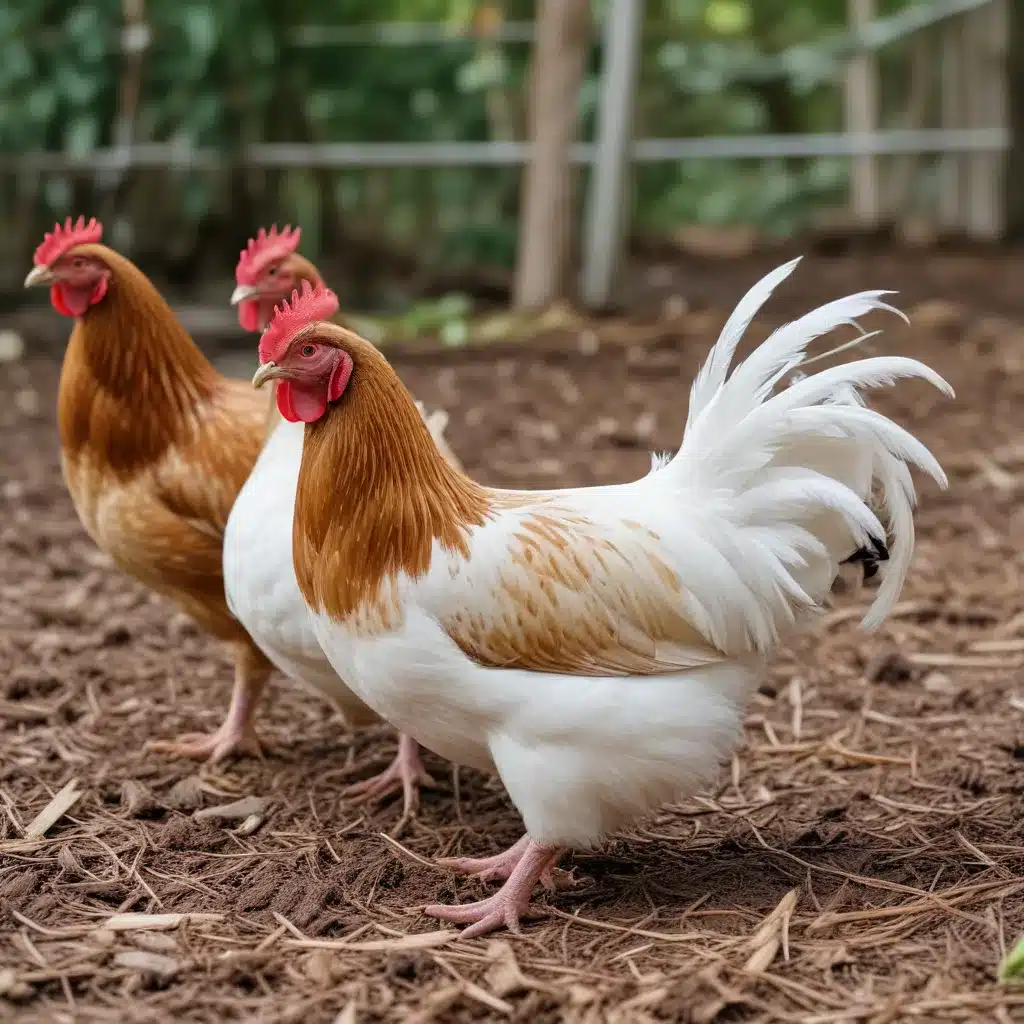
As you stroll through the lush pastures of Crooked Pines Farm, the rhythmic clucking and quacking of our feathered inhabitants greets you. These charismatic creatures, from the majestic chickens to the playful ducks, are an integral part of our vibrant farm ecosystem. Join us on a poultry-centric nature walk to discover the fascinating behaviors, adaptations, and roles these birds fulfill in our agricultural oasis.
The Farm’s Feathered Inhabitants
Chickens, with their striking plumage and curious personalities, are undoubtedly the stars of the show here at Crooked Pines. Our flock of heritage breeds, such as Rhode Island Reds, Orpingtons, and Wyandottes, strut confidently around their spacious coops and foraging areas, showcasing their diverse coloration and unique characteristics. Occasionally, you might spot a hen sitting protectively on her clutch of eggs, patiently awaiting the arrival of her fluffy chicks.
Complementing the chickens are our ducks and geese, who add a touch of playfulness and grace to the farmyard. The iridescent Pekins and regal Saxony ducks glide effortlessly through the shallow ponds, occasionally taking to the air in a flurry of flapping wings. Meanwhile, the stately Embden and Canadian geese graze alongside their feathered counterparts, their honking calls echoing across the landscape.
Poultry Behavior and Habits
As you observe these birds, you’ll quickly notice their distinct feeding patterns. The chickens scratch and peck at the ground, unearthing insects, worms, and seeds to supplement their diet of grain and table scraps. The ducks and geese, on the other hand, tend to forage more in the water, sifting through the muck for aquatic plants and small aquatic creatures.
The nesting and reproductive behaviors of our poultry are equally fascinating. Hens will carefully select secluded spots, often in the straw-lined corners of their coops, to lay their eggs. Meanwhile, the male birds, known as roosters and drakes, engage in elaborate courtship displays, flapping their wings and emitting distinctive calls to attract mates.
The social dynamics within the flock are equally captivating. Chickens, in particular, have a well-defined pecking order, with the dominant individuals asserting their authority over the others. You might witness the birds engaging in grooming behaviors, such as dust bathing or preening, as they maintain their feathers and strengthen the bonds within the group.
The Poultry Habitat
The Farmyard
The heart of the poultry’s domain at Crooked Pines Farm is the farmyard, where their spacious coops and enclosures provide them with shelter, nesting sites, and a safe place to roam. These structures are carefully designed to meet the birds’ needs, with features like perches, nesting boxes, and ample foraging areas.
Beyond the coops, the birds have ample access to the surrounding pastures, where they can freely explore and forage for insects, seeds, and vegetation. The varied terrain, with its mix of grassy areas, bare soil patches, and scattered vegetation, offers the poultry a diverse and enriching environment to thrive in.
Surrounding Natural Areas
The farm’s poultry also benefit from the proximity of natural areas, such as the wooded edges and wetland ecosystems. These habitats provide valuable resources and opportunities for the birds to interact with other wildlife. In the wooded areas, you might spot our chickens and ducks venturing in to forage for wild berries, nuts, and insects that thrive in the understory. The wetland areas, on the other hand, attract our web-footed friends, who revel in the abundance of aquatic plants, invertebrates, and amphibians found in the ponds and streams.
Poultry and Biodiversity
Role in the Ecosystem
The presence of poultry on our farm plays a crucial role in maintaining a healthy and balanced ecosystem. Through their scratching and foraging behaviors, the birds help to aerate the soil and disperse seeds, contributing to the nutrient cycling process that sustains the farm’s productivity. Additionally, their voracious appetite for insects and small pests makes them natural pest control agents, reducing the need for harmful chemical interventions.
Interactions with Other Wildlife
The birds’ impact on the farm’s biodiversity extends beyond their own species. The coops and feeders provide nesting opportunities and foraging resources for a variety of native bird species, including songbirds and raptors. These feathered visitors play a crucial role in pollinating the farm’s flowering plants and controlling rodent populations. Conversely, the poultry are occasionally subject to the attention of predators, such as foxes, coyotes, and birds of prey, which underscores the importance of implementing responsible poultry-keeping practices.
Responsible Poultry Keeping
Ethical Farming Practices
At Crooked Pines Farm, we are committed to ethical and sustainable poultry-keeping practices. This means providing our birds with spacious, well-ventilated coops, ample access to the outdoors, and a diverse, nutritious diet. We also employ humane slaughter methods and ensure that our poultry are treated with the utmost care and respect throughout their lives.
Educational Opportunities
Beyond the practical benefits of poultry-keeping, our farm offers a wealth of educational opportunities for visitors, especially young learners. Through hands-on interactions with the birds, guided tours, and interpretive signage, we strive to foster a deeper appreciation for the ecological role of poultry, as well as the rich agricultural heritage that is woven into the fabric of our rural landscape.
As you continue your nature walk through Crooked Pines Farm, be sure to take the time to observe and engage with our feathered friends. From the strutting chickens to the graceful ducks and geese, these remarkable creatures are an integral part of the vibrant tapestry that makes our farm a true haven for both human and avian inhabitants alike. So, open your senses, and let the rhythmic calls and captivating behaviors of our poultry transport you to the heart of this agricultural oasis.


